One of my favorite memories of visiting Colonial Virginia as a kid was seeing Jamestown. Maybe it had to do with my 4th-grade social studies project where my father and I used empty milk cartons, painted green and brown, to represent the village.
The biggest regret on our first trip to Williamsburg and DC is that we didn’t get to see Jamestown or Yorktown. As a piece of travel literature explained, Jamestown is where it all began with English settlers in 1607, Williamsburg showcases political and commercial life when it became the capital in 1699 and Yorktown is where the final battle to US independence occurred in 1781. To get a sense of Colonial Virginia, it’s best to see all three.

Just 7 miles southwest of Williamsburg lies Jamestown, consisting of two different tourist sites along the James River. The first is Jamestown Settlement which is what I saw as a kid. Everything is recreated to show what Jamestown looked like in the 1600s. This is probably a better choice for children and families as characters in period dress explain the history and site.
The other option to visit is Historic Jamestowne (note the original English spelling of the settlement) which is a joint partnership between the National Park Service (part of the Colonial National Historic Park) and the Rediscover Jamestown Foundation. Located on the actual 1607 site, archeological digs and research are ongoing. We opted to explore this as we wanted to see historic artifacts and get our National Park Passport book stamped.
Historic Jamestowne
After paying admission at the large visitor center, we walked across an elevated boardwalk to a miniature Washington Monument structure. The Tercentennial Monument honors the first 103 settlers.
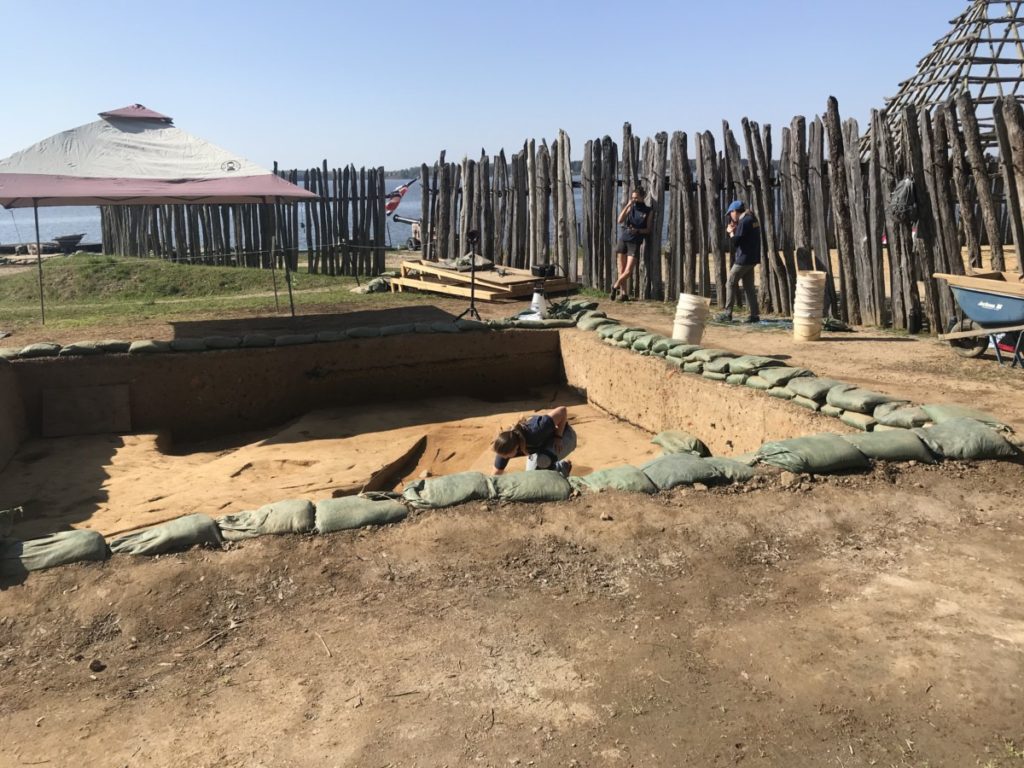
We came upon several pits with archaeologists at work. Although staff members encouraged us to ask questions directly to the archaeologists, I didn’t want to interrupt their concentration. We did learn that without modern-day trash service, the early settlers threw old items outside the fort walls, making the surrounding landscape ripe with artifacts. The Archaearium on the property displays many of these objects. The female archaeologist explained she collects samples from this former ditch to determine when the settlers built it and how long they used it.
Memorial Church
Besides the Archaearium and visitor center, Memorial Church is the only other standing building on the property. In preparation for the 300th-anniversary celebration of Jamestown, the Colonial Dames Society erected the red brick church in 1906 on top of the foundation of the brick 1647 church. During construction, they discovered remnants of an even earlier 1617 church with cobblestone floors.
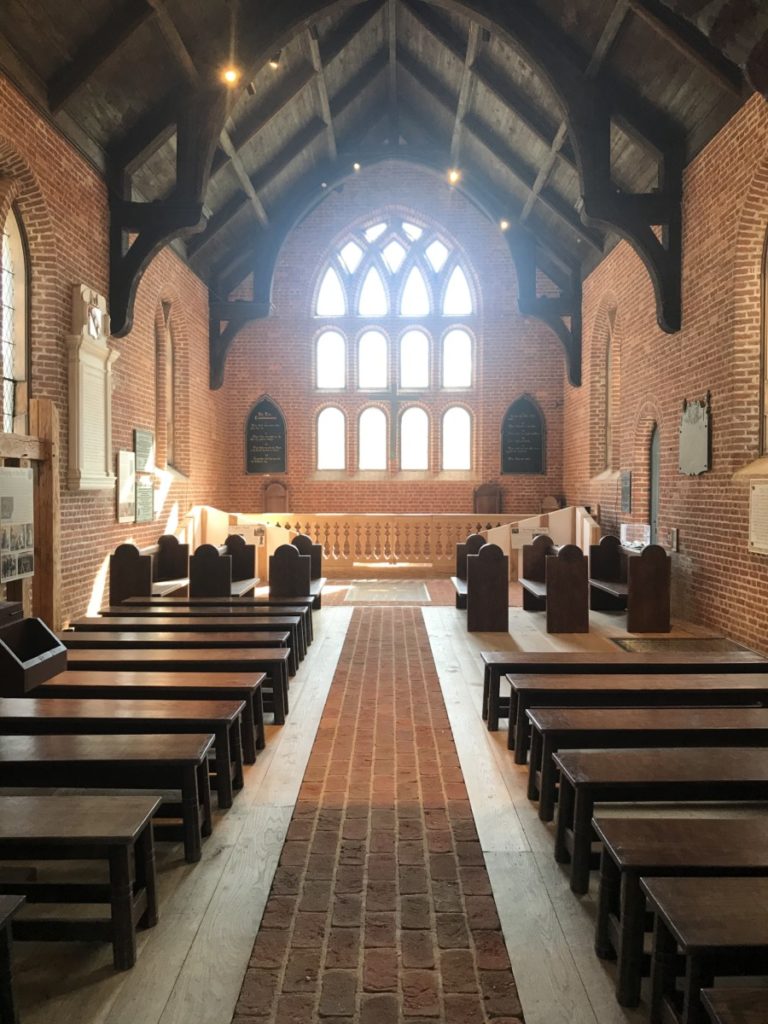
Archaeologists believe Jamestown had several different church buildings. The early settlers built a small wooden church in 1608 (whose site was discovered in 2010). Needing more space, the townspeople relocated the church to its current site in 1617. This time they used more substantial materials including cobblestone flooring and the first Representative Legislative Assembly in English North America met here. In 1639, they replaced the wooden church with a completely brick structure. After suffering heavy damage during Bacon’s Rebellion in 1676, experts debate where the citizens repaired or completely rebuilt the church around 1680.
I know this is a lot of dates to throw out but it’s important to note for two reasons. The first is that building materials didn’t last very long and second, the church was a central part of the community life.
Inside the Fort
While walking around the fort, we learned much history. Did you realize that the London Company only sent 103 men and boys? The first order of business was to build a triangle-shaped fort providing protection from neighboring Indian tribes.
Conditions were so brutal that only 38 of the 103 survived by the end of 1607. The water supply was almost non-exisitant as the James River was salty. On the other side of the island, the swamps contained hazardous toxins. Additionally, they didn’t bring over enough fishermen to find food. The London Company added more men with the First and Second Supplies in 1608. It wasn’t until the Third Supply in 1609 that women came to the settlement. Most of these were the equivalent of mail-order brides – women looking for a fresh start.
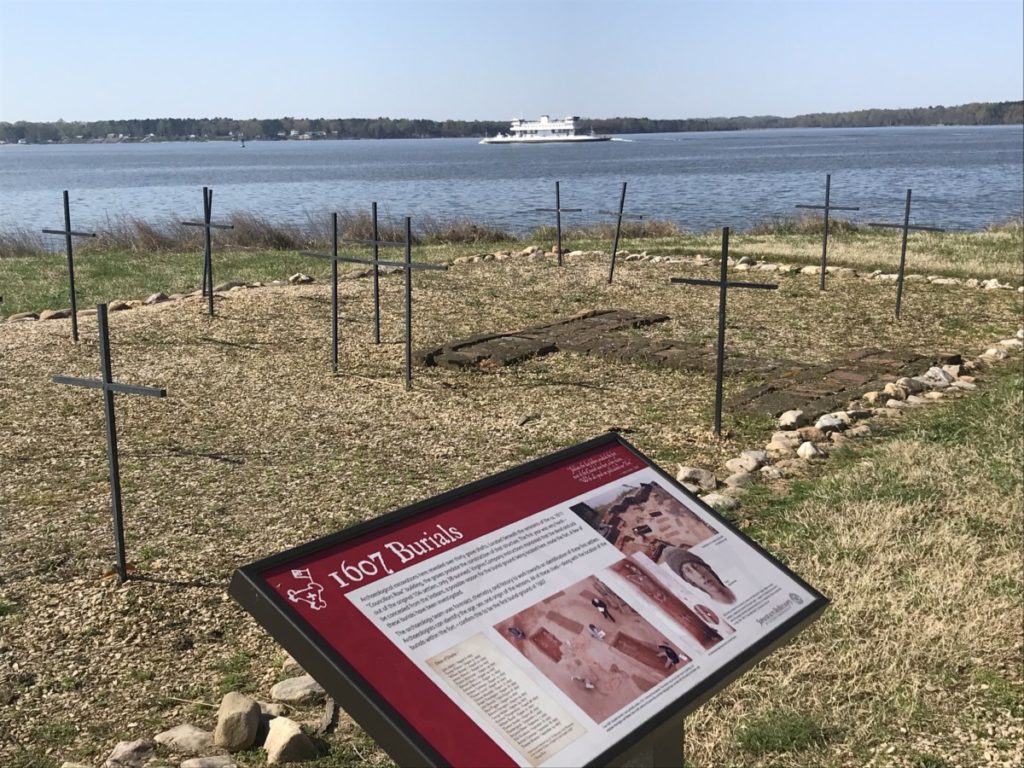
The Starving Time began around 1610 and killed 75% of the settlers. The remaining group decides to leave but soon encounters the resupply boat led by Captain De La War. With over a year of food provisions, they turn around and settle back into Jamestown. How things would have been different had they deserted. There might not even be a United States.
The Archaearium
We entered the newly constructed museum. Unfortunately, they don’t allow inside photographs but the artifacts on display were spectacular. I would say this is where the story of Jamestown made sense to me. By presenting a timeline and focusing on the early settlers, I got a better sense of the events transpiring here.
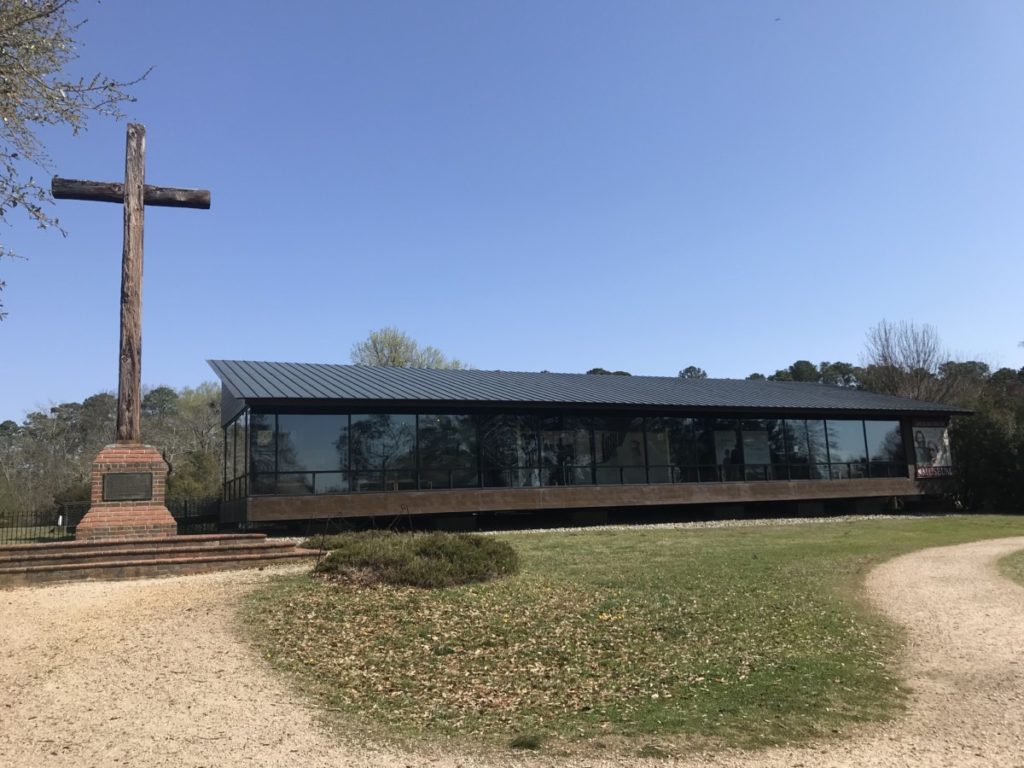
New Towne
As the population grew, the town moved eastward sometime after 1620 into what is called New Towne. A path took us on a walking tour of the foundation ruins of Swann’s Tavern, and a few houses including the Ambler Mansion. A plaque showed an illustrated image of what each structure might have looked like in the 17th century.
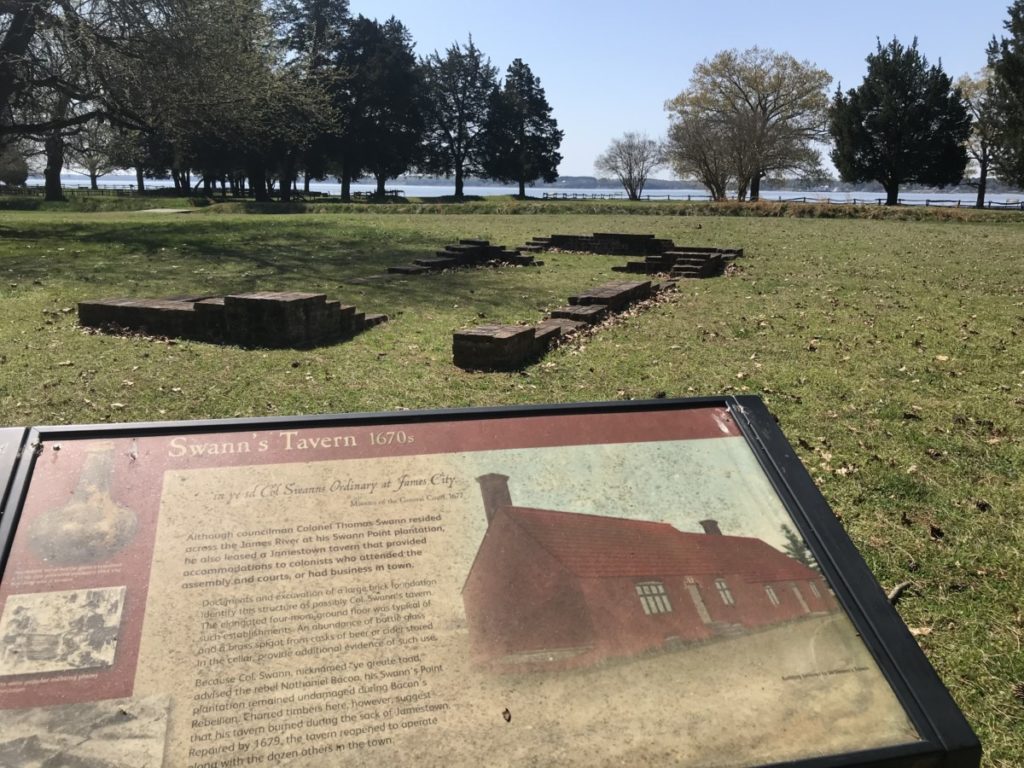
So what happened to Jamestown? By all accounts, it seems to have been a thriving community until the 1790s. After a widespread fire destroyed many wooden structures in 1698, the citizens decided to move the capital 10 miles north to Williamsburg. Further away from swampland, the new location provided a better water supply and fewer mosquitoes.
Fees and Information
Regular admission is $25 per adult. Because this is a joint venture with the National Park Service, annual pass holders only pay $10 per adult. All tickets include admission to the Yorktown Battlefield, which is also part of the Colonial National Historic Park.
Plan to spend 2- 3 hours at this site. Typically, a movie plays in the visitor center but it wasn’t offered on our visit due to Covid regulations.
